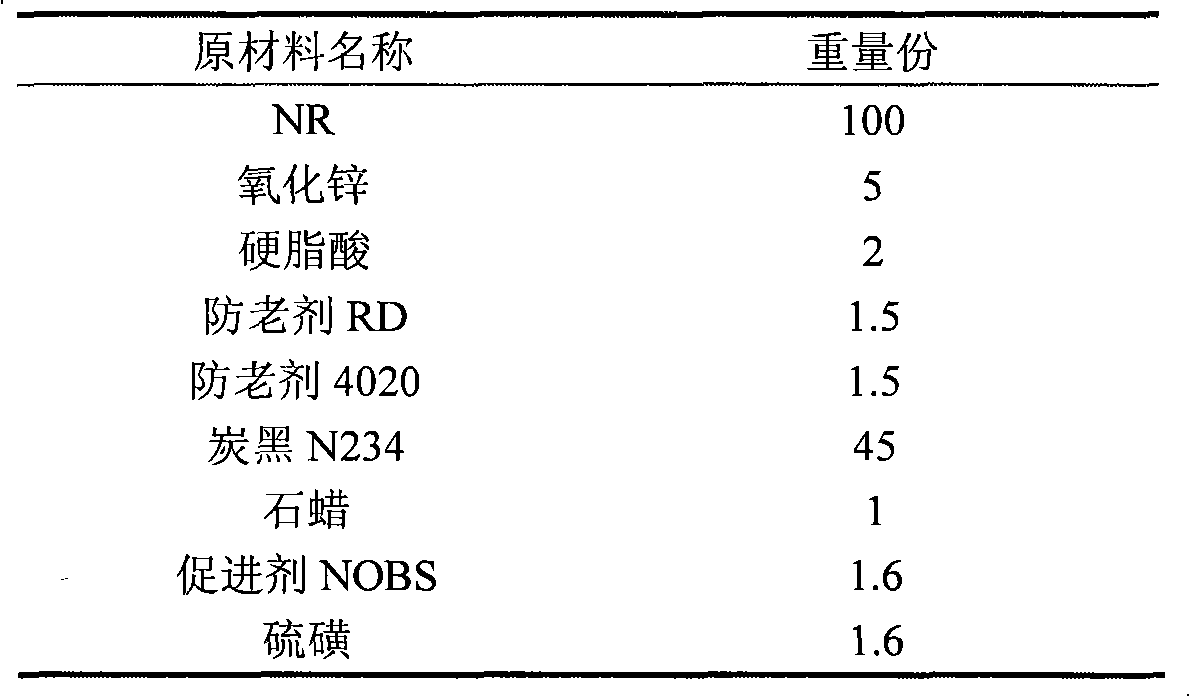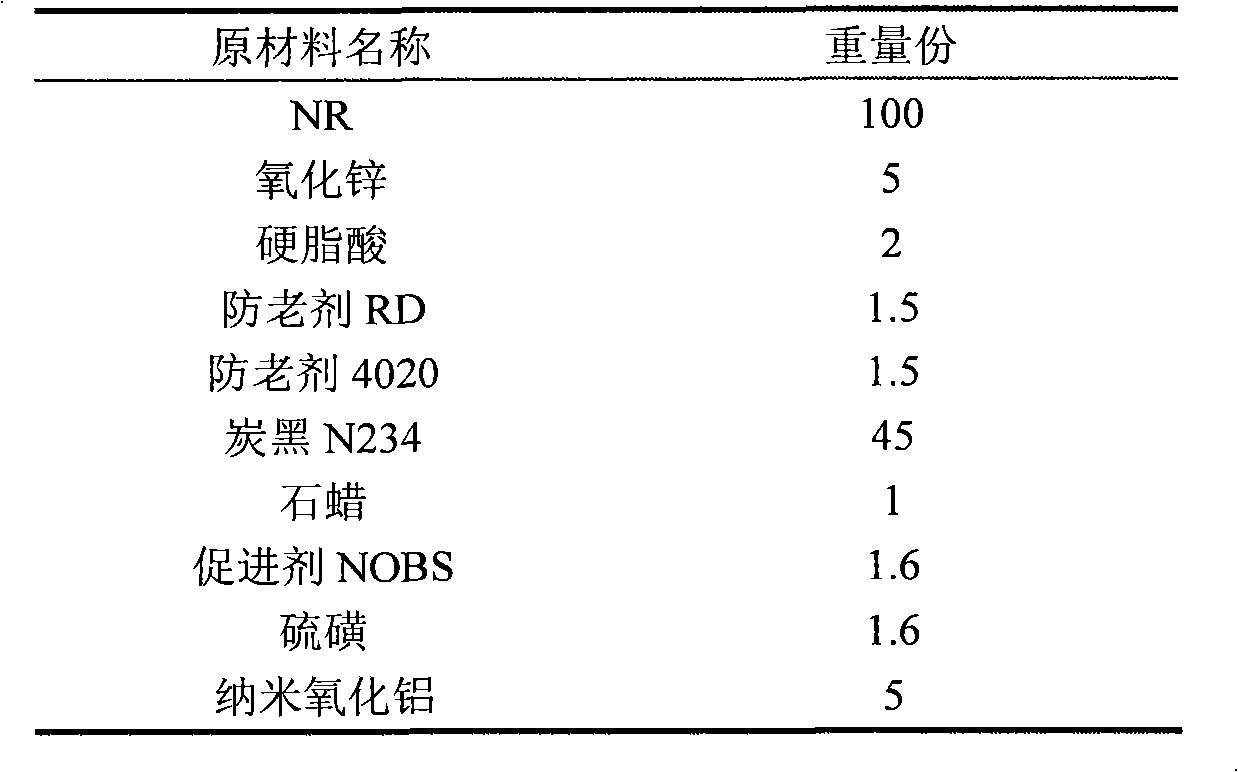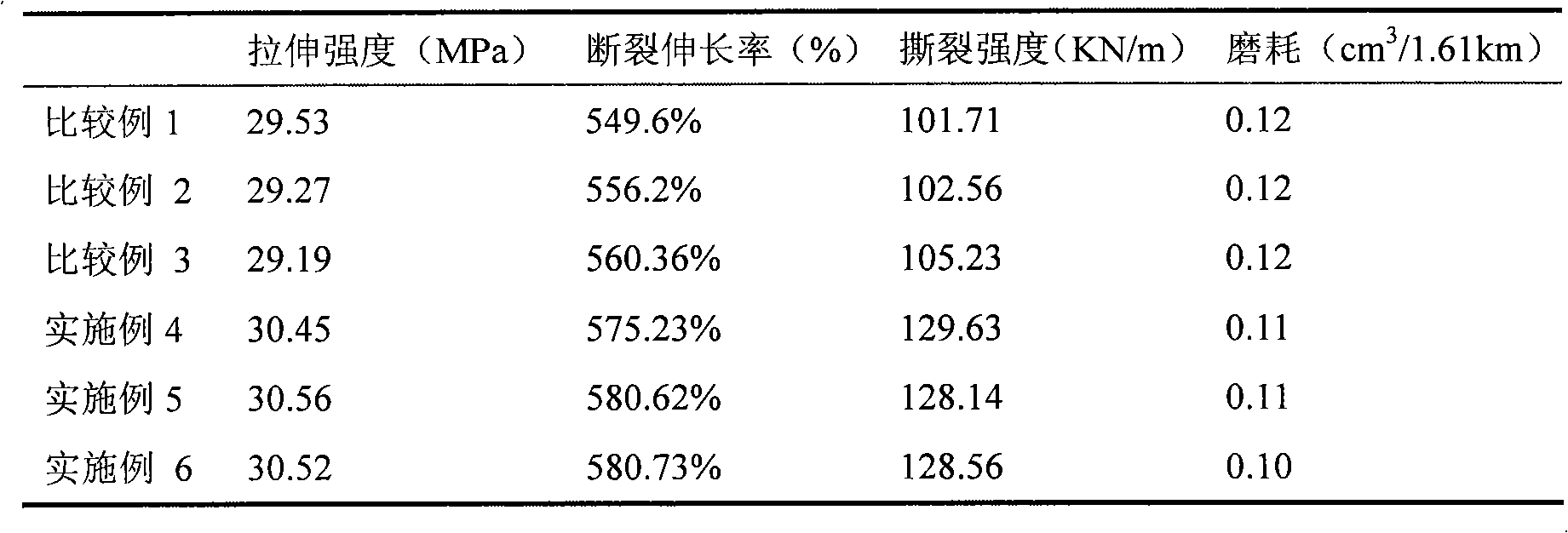Method of using super-cladodification polymer branch-connection inorganic nanometer powder for reinforcing surface rubber performance of engineering tyre
A hyperbranched polymer, inorganic nanotechnology, applied in tires, applications, household appliances, etc., can solve the problems of inability to reach, difficult to disperse and process, poor compatibility, etc.
- Summary
- Abstract
- Description
- Claims
- Application Information
AI Technical Summary
Problems solved by technology
Method used
Image
Examples
Embodiment 1
[0022] Use nano-alumina as the initial raw material, vacuum dry at 110°C for 24 hours to remove impurities in the raw material, then modify the surface with grafted silane coupling agents KH550, KH560, KH590, and then react with hyperbranched polyester under the action of a catalyst to obtain hyperbranched Grafted nanopowders.
[0023] Step (a): Add 100ml of absolute ethanol to the flask, add 2g of nanopowder and 1ml of KH550, ultrasonic for 30 minutes, stir and reflux for 2-4h until all suspended, wash repeatedly, filter with suction, and vacuum dry at 110°C for 10-24h Finally, organically treated nano-powder KH550-Al was obtained 2 o 3 ;
[0024] Step (b): Add 2 g of the nanopowder of step (a) or unmodified nanopowder into the flask, add 25 g of 10% carboxyl-terminated hyperbranched polymer tetrahydrofuran solution, seal it, and pump nitrogen repeatedly three times , sonicated for 30-1000min, reacted at 120°C for 4h, suction filtered, washed repeatedly, and vacuum-dried a...
Embodiment 2
[0026] Use nano-alumina as the initial raw material, vacuum dry at 110°C for 24 hours to remove impurities in the raw material, then modify the surface with grafted silane coupling agents KH550, KH560, KH590, and then react with hyperbranched polyester under the action of a catalyst to obtain hyperbranched Grafted nanopowders.
[0027] Step (a): Add 100ml of absolute ethanol to the flask, add 2g of powder and 1ml of KH550, sonicate for 30 minutes, stir and reflux for 2-4h until all are suspended, wash repeatedly, filter with suction, and vacuum dry at 110°C for 10-24h Obtain organic treatment nanopowder;
[0028] Step (b): Add 2g of nanopowder of step (a) or nanopowder without organic modification into the flask, add 5g of 2,2-bis(hydroxymethyl)propionic acid, 0.5g of p-toluenesulfonic acid and 50ml DMF, ultrasonicated for 30 minutes, sealed, refluxed in nitrogen atmosphere for 4h until the reaction was complete, filtered with suction, washed repeatedly, and dried in vacuum a...
Embodiment 3
[0030] Using SiC as the initial raw material, after acidification and acylation, ethylenediamine was connected, and in the presence of boron trifluoride ether, the polymerization of glycidol was initiated to obtain SiC grafted with hyperbranched polymer synthesized in situ.
[0031] Step (a): In a 100ml single-neck round bottom flask equipped with a magnetic stirring rotor, add 4g of dry SiC40ml 60%HNO 3 , heated to 120°C after ultrasonication for 30 minutes, stirred and refluxed for 24 hours, filtered with polytetrafluoroethylene microporous membrane, washed repeatedly with deionized water until neutral, and vacuum dried at 80°C for 24 hours to obtain 3.5 g of acidified SiC;
[0032]Step (b): In a 100ml single-neck round bottom flask equipped with a magnetic stirring rotor, add 3.5g of acidified SiC and 15g of thionyl chloride obtained in step (a), ultrasonicate for 30min, heat to 60°C, stir and reflux Reacted for 24 hours, suction filtered and washed repeatedly to remove thi...
PUM
 Login to View More
Login to View More Abstract
Description
Claims
Application Information
 Login to View More
Login to View More - R&D
- Intellectual Property
- Life Sciences
- Materials
- Tech Scout
- Unparalleled Data Quality
- Higher Quality Content
- 60% Fewer Hallucinations
Browse by: Latest US Patents, China's latest patents, Technical Efficacy Thesaurus, Application Domain, Technology Topic, Popular Technical Reports.
© 2025 PatSnap. All rights reserved.Legal|Privacy policy|Modern Slavery Act Transparency Statement|Sitemap|About US| Contact US: help@patsnap.com



